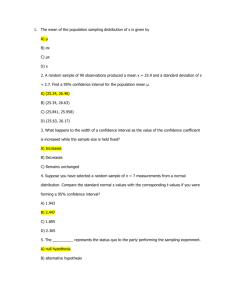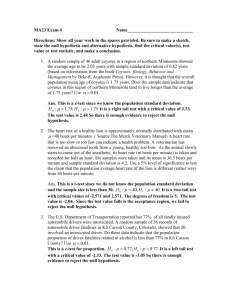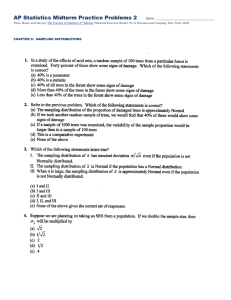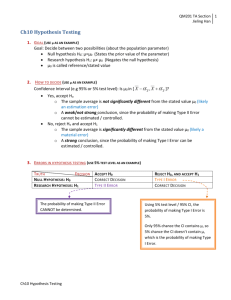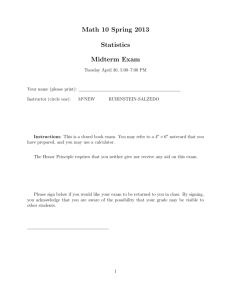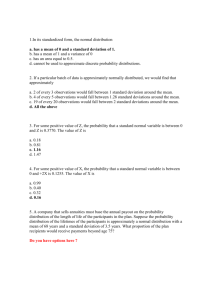Section 10.1 ~ t Distribution for Inferences About a Mean Objective
advertisement
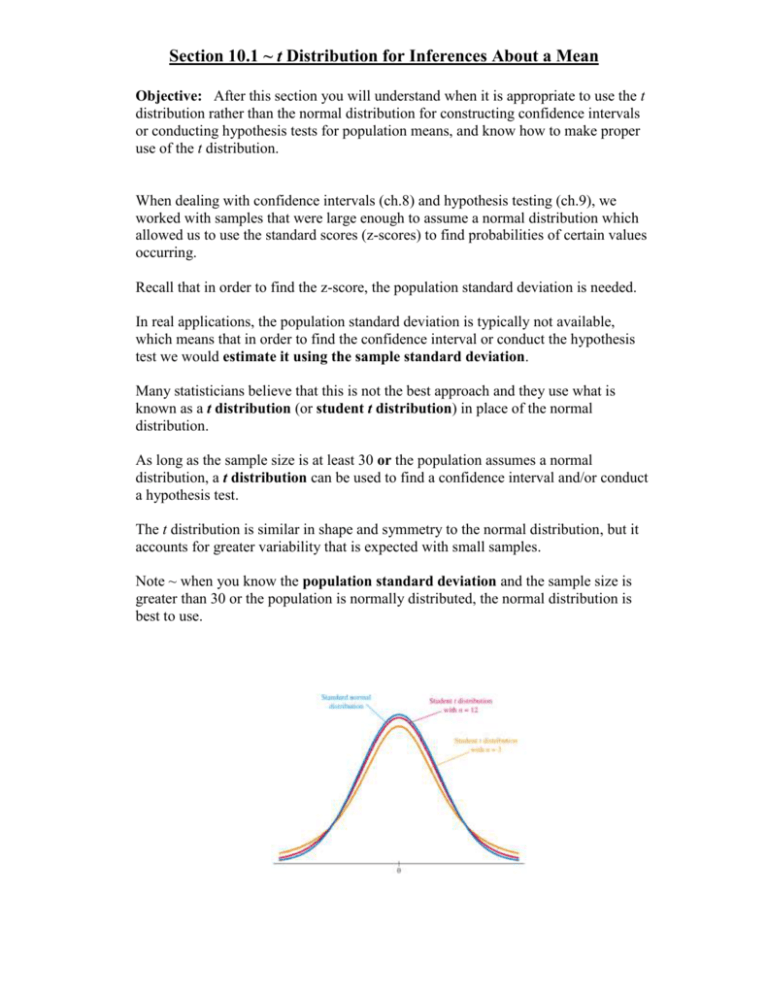
Section 10.1 ~ t Distribution for Inferences About a Mean Objective: After this section you will understand when it is appropriate to use the t distribution rather than the normal distribution for constructing confidence intervals or conducting hypothesis tests for population means, and know how to make proper use of the t distribution. When dealing with confidence intervals (ch.8) and hypothesis testing (ch.9), we worked with samples that were large enough to assume a normal distribution which allowed us to use the standard scores (z-scores) to find probabilities of certain values occurring. Recall that in order to find the z-score, the population standard deviation is needed. In real applications, the population standard deviation is typically not available, which means that in order to find the confidence interval or conduct the hypothesis test we would estimate it using the sample standard deviation. Many statisticians believe that this is not the best approach and they use what is known as a t distribution (or student t distribution) in place of the normal distribution. As long as the sample size is at least 30 or the population assumes a normal distribution, a t distribution can be used to find a confidence interval and/or conduct a hypothesis test. The t distribution is similar in shape and symmetry to the normal distribution, but it accounts for greater variability that is expected with small samples. Note ~ when you know the population standard deviation and the sample size is greater than 30 or the population is normally distributed, the normal distribution is best to use. t value: Formula for margin of error using a t distribution: A t value is found by: Example 1 Here are five measures of diastolic blood pressure from randomly selected adult men: 78, 54, 81, 68, 66. These five values result in these sample statistics: n = 5, x 69.4 , and s = 10.7. Using this sample, construct the 95% confidence interval estimate of the mean diastolic blood pressure level for the population of all men. When a t distribution is used to conduct a hypothesis test, the t value plays the role that the z-score played when we worked with the normal distribution. Formula to calculate the t value: Once you calculate t, you can decide whether to reject or not reject the null hypothesis by using this following criteria: Right-tailed test: reject the null if the t value that you found is ___________ the t value from the table (that corresponds to the appropriate degrees of freedom) Use column 2 as a comparison if you want a 97.5% confidence level and column 3 if you want a 95% confidence level Left-tailed test: reject the null if the t value that you found is ___________ the negative of the t value from the table (that corresponds to the appropriate degrees of freedom) Use column 2 as a comparison if you want a 97.5% confidence level and column 3 if you want a 95% confidence level Two-tailed test: reject the null if the absolute value of the t value that you found is ___________ the t value from the table (that corresponds to the appropriate degrees of freedom) Use column 2 as a comparison if you want a 95% confidence level and column 3 if you want a 90% confidence level Example 2: Listed below are ten randomly selected IQ scores of statistics students: 111 115 118 100 106 108 110 105 113 109 Using methods from Chapter 4, you can confirm that these data have the following sample statistics: n = 10, x 109.5 , and s = 5.2. Using a 0.05 significance level, test the claim that statistics students have a mean IQ score greater than 100, which is the mean IQ score of the general population. Example 3: Using the same data from example 2 and the same significance level of .05, test the claim that the mean IQ score is equal to 100.




